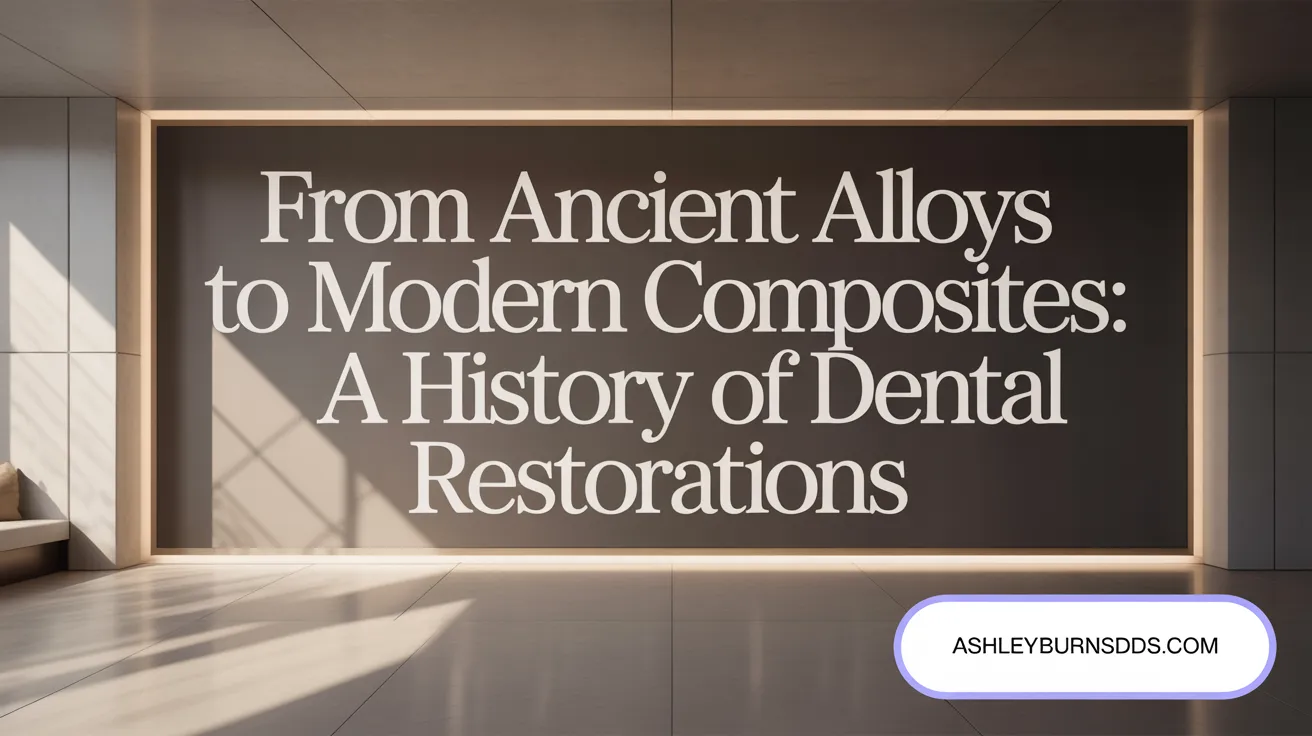Understanding Your Options for Dental Fillings
Dental fillings are a common restoration used to repair tooth decay and damage. Among the primary choices are composite and amalgam fillings, each with unique materials, advantages, and considerations. This article explores their differences, benefits, drawbacks, and how to decide which is right for your dental health, appearance, and lifestyle.
Materials, Composition, and Evolution of Composite and Amalgam Fillings

What materials and types are used to make composite and amalgam fillings?
Composite fillings are crafted from a synthetic resin matrix combined with various inorganic filler particles such as silica or ceramic. These materials are designed to mimic the natural translucency and color of teeth, offering an aesthetically pleasing option. The resin, often based on Bis-GMA, UDMA, or HDDMA, is light-cured with a special blue light to harden it layer by layer, enabling precise shaping and bonding.
Amalgam fillings , on the other hand, consist of a mixture of metals—mainly approximately 50% elemental mercury—with powdered alloys of silver, tin, copper, and sometimes zinc. The mercury acts as a binding agent that reacts with the other metals to form a durable, pliable amalgam alloy. The composition can vary, with high copper amalgams (containing 13-30% copper) providing better corrosion resistance and strength.
How have composite and amalgam dental fillings evolved over time?
Dental amalgam has a history dating back to ancient China, where similar mixtures of metals were used for dental repairs. Its widespread popularity surged in the 1800s due to its durability, low cost, and ease of application. Over the decades, the introduction of high copper amalgams made from more corrosion-resistant alloys improved longevity and reduced common issues like creep and fracture.
Composite fillings first appeared in the 1960s as a cosmetic alternative to amalgam. Early versions faced challenges in bonding, aesthetics, and durability. However, rapid advancements in resin technology, filler materials, and curing techniques have significantly enhanced their strength, wear resistance, and ease of placement. Today, composites are widely used for both front and back teeth, favored for their natural appearance and conservativeness.
Throughout their development, ongoing research focuses on improving lifespan, reducing polymerization shrinkage, and ensuring safety, leading to broader acceptance and application of both materials in modern dentistry.
Comparing the Physical Properties and Functionality
 Dental fillings are essential restorations used to repair decayed or damaged teeth. Two common types are composite fillings and amalgam fillings, each with distinct properties and clinical implications.
Dental fillings are essential restorations used to repair decayed or damaged teeth. Two common types are composite fillings and amalgam fillings, each with distinct properties and clinical implications.
Differences between composite and amalgam fillings include their materials, appearance, durability, and placement process. Composite fillings are made of a resin-based material that closely mimics the natural color of teeth, providing excellent aesthetics. They bond directly to the tooth structure, allowing for preservation of more natural tissue, and are suitable for both front and back teeth. Typically, they last approximately 5 to 10 years. Amalgam fillings on the other hand, are metallic, silver-gray in color, and composed of a mixture of metals including mercury, silver, tin, and copper. They are renowned for their strength and longevity, often lasting 10 to 15 years or more, making them especially effective in molars and high-stress areas. Although durable and less costly, amalgam contains mercury, which has raised health and environmental concerns, albeit its use is deemed safe by health agencies.
Advantages and disadvantages of composite fillings highlight their aesthetic appeal and capacity to bond strongly with teeth, reinforcing the natural structure. They require less removal of healthy tissue during placement and cause less temperature sensitivity. However, their disadvantages include a shorter lifespan compared to amalgam, with potential staining over time, higher costs, and the necessity for a precise, dry environment during application. Concerns about the possible release of BPA and other chemicals have also been noted. For more detail, see pros and cons of composite fillings.
Advantages and disadvantages of amalgam fillings emphasize their durability, resistance to wear, and cost-effectiveness. They are easier and faster to place and excel in large or moist cavities typical of molars. Nonetheless, their drawbacks include their conspicuous metallic appearance, which may be undesirable for visible teeth, and the requirement for more extensive removal of healthy tooth tissue. Concerns regarding mercury exposure exist, though scientific consensus supports their safety for most individuals. Additionally, amalgam’s tendency to expand or contract with temperature flux can precipitate cracks or fractures in the tooth. More information can be found on amalgam fillings durability and safety.
Summing up, the choice between composite and amalgam depends on numerous factors such as location within the mouth, cosmetic preferences, budget, and specific dental health considerations. While composite offers a natural look and conservation of tooth tissue, amalgam remains a robust, economical option for durable restorations in load-bearing areas.
Durability, Lifespan, and Cost Considerations
 When choosing between composite and amalgam dental fillings, it is essential to understand how they compare in terms of durability, lifespan, and cost. Amalgam fillings are known for their robustness and longevity. Under optimal conditions, they can last from about 10 to over 150 years, with most lasting between 10 to 15 years in typical dental practice. Their strength makes them especially suitable for restoring molars subjected to heavy biting and chewing forces.
When choosing between composite and amalgam dental fillings, it is essential to understand how they compare in terms of durability, lifespan, and cost. Amalgam fillings are known for their robustness and longevity. Under optimal conditions, they can last from about 10 to over 150 years, with most lasting between 10 to 15 years in typical dental practice. Their strength makes them especially suitable for restoring molars subjected to heavy biting and chewing forces.
In contrast, composite fillings, which are tooth-colored and more aesthetically pleasing, typically last around 5 to 10 years. While not as enduring as amalgams, ongoing advancements in composite materials and placement techniques continue to improve their durability. Composites are particularly effective for small to medium-sized cavities and are favored for visible areas due to their natural appearance.
Cost is another significant factor. Generally, composite fillings are more expensive, with prices ranging approximately from $90 to $250 per tooth, owing to the higher cost of materials and the more meticulous placement process. Amalgam fillings tend to be more affordable, costing roughly between $50 and $150 per tooth. Despite their higher initial cost, composites may require more frequent replacements, potentially increasing long-term costs.
In summary, amalgam offers a longer lifespan and greater durability, especially in load-bearing positions like the back molars. Meanwhile, composites prioritize aesthetic appeal and preserve more of the natural tooth but may need replacement sooner and come at a higher price. When selecting a filling material, considerations such as the cavity location, patient budget, and aesthetic preferences should guide the decision.
Safety, Health, and Environmental Impact

What are the safety and health considerations associated with composite fillings and amalgam fillings?
Extensive research conducted over decades by organizations such as the U.S. Food and Drug Administration (FDA), World Health Organization (WHO), and American Dental Association (ADA) consistently shows that dental amalgam is safe for the general population. The mercury vapor released from amalgam fillings is minimal and falls well below safety thresholds, posing little to no risk for most individuals. Nonetheless, vulnerable groups—including pregnant women, nursing mothers, young children, and individuals with neurological or kidney conditions—are advised to consider alternatives or discuss their options with their healthcare provider due to potential sensitivity or risk.
In contrast, composite resins are mercury-free, making them a safer choice from a chemical standpoint. They are generally considered safe but may cause allergic reactions or sensitivities in some patients. Additionally, concerns about the release of substances like Bisphenol-A (BPA), used in some resin compositions, have been raised, though evidence of significant health risks remains limited.
Both materials require proper handling during placement and removal procedures. Amalgam waste is managed via environmental regulations that aim to minimize mercury release into ecosystems, employing mechanisms such as amalgam separators to capture mercury particles.
What scientific research and regulations exist regarding the safety of amalgam fillings?
The safety of amalgam has been validated through systematic reviews and scientific studies for over 150 years. Notably, international bodies like the WHO, the European Union, and the FDA have reviewed available evidence and concluded that the mercury vapor exposure from amalgam fillings is extremely low and does not cause adverse health effects in the majority of the population.
Regulations worldwide aim to reduce environmental impacts stemming from dental waste. In the European Union, regulations like the Minamata Convention aim to phase down the use of amalgam due to environmental concerns, especially mercury pollution. In dental practices, the use of pre-capsulated amalgam alloys and installation of amalgam separators are mandated to reduce waste and prevent mercury contamination.
The FDA emphasizes that the removal of amalgam fillings is generally unnecessary unless medically justified, as intact fillings in good condition do not pose significant health risks. Special precautions are recommended for high-risk populations, and ongoing research continues to monitor the safety and environmental impact of amalgam use.
What is the environmental impact of amalgam versus composite fillings?
Amalgam contains approximately 50% mercury, a toxic heavy metal that can bioaccumulate in the environment. Improper disposal of amalgam waste, such as amalgam dust or excess material from dental procedures, can release mercury into water and soil, contributing to environmental contamination and health hazards for wildlife and humans.
Environmental policies, including the use of amalgam separators and waste management regulations, have reduced the degree of mercury entering waste systems. Still, concerns persist regarding the complete environmental safety of amalgam, leading many countries to adopt measures to phase out or restrict its use.
In contrast, resin composites are composed of plastic polymers and inorganic fillers like silica or glass (see details on dental composite materials). They do not contain mercury and generally have a lower environmental impact regarding toxicity. However, they may release other chemicals such as BPA or other resin components into the environment over time or during manufacturing, though the extent and impact of such leaching are considered limited.
Overall, the transition toward alternative materials like composites reflects increasing global awareness of mercury’s environmental hazards. Both the dental community and regulatory agencies are committed to improving the environmental sustainability of dental practices through waste reduction and adoption of safer materials.
Factors Influencing Choice and Practical Considerations
What factors influence the choice of dental filling material?
Selecting the most appropriate dental filling depends on several practical considerations. The location and size of the cavity are primary factors: amalgam and gold fillings are often recommended for large or posterior (back) teeth because of their superior durability and strength under chewing forces.
In contrast, composite and ceramic options are favored for front teeth or visible areas due to their natural tooth-like appearance and excellent aesthetic qualities.
Cost is another critical factor, with amalgam generally being the most affordable and composite resins costing more, reflecting their aesthetic value and application complexity.
Health and safety considerations, such as allergies or sensitivities to metals like mercury, also influence the choice. Patients with known sensitivities typically opt for composite or ceramic restorations.
Patient preferences, especially regarding aesthetics, drive the selection towards tooth-colored materials like composite resins and ceramics.
Additionally, the clinician’s assessment and recommendation, based on cavity complexity and the patient's oral habits like bruxism, play a role in material selection.
Oral hygiene and maintenance are essential for prolonging the lifespan of any restoration, regardless of material. Understanding these factors helps patients make informed decisions tailored to their dental health needs.
Dental Filling Procedures and Patient Care
General Overview of Dental Filling Materials and Options
Dental fillings are used to repair damaged teeth caused by decay or trauma. The two main types are amalgam and composite. Amalgam is a mixture of metals including mercury, silver, tin, and copper, is known for its strength, durability, and cost-effectiveness. It lasts 10-15 years or more but has a metallic appearance. Composite fillings are tooth-colored resins made of plastic and glass particles. They blend seamlessly with natural teeth, ideal for visible areas, and typically last 5-10 years.
The choice depends on location, aesthetic preferences, budget, and dental health. Amalgam is often preferred for back teeth due to its longevity and strength, while composite is favored for front teeth for its appearance.
Procedure and Maintenance of Composite and Amalgam Fillings
The process begins with numbing the area, then removing decayed material. In amalgam fillings, the cavity is shaped and filled with amalgam, which hardens quickly. For composite, the cavity is prepared, then layered with resin, each layer cured with a special light, and polished.
Both types require careful oral hygiene and regular dental visits to prolong their lifespan. Avoiding hard or sticky foods initially, and maintaining good brushing and flossing habits help prevent further decay and damage to the fillings.
Making the Best Choice for Your Dental Health
Choosing between composite and amalgam fillings involves balancing aesthetics, durability, cost, and health considerations. Composite fillings provide a natural appearance and conserve tooth structure but may need more frequent replacement and cost more. Amalgam fillings offer longevity and strength at a lower cost but lack cosmetic appeal and involve mercury content, necessitating careful patient selection. Advances in dental materials continuously improve options available. Consulting with your dentist about your unique dental needs, preferences, and health status is essential to select the most suitable filling for a healthy, functional, and attractive smile.
